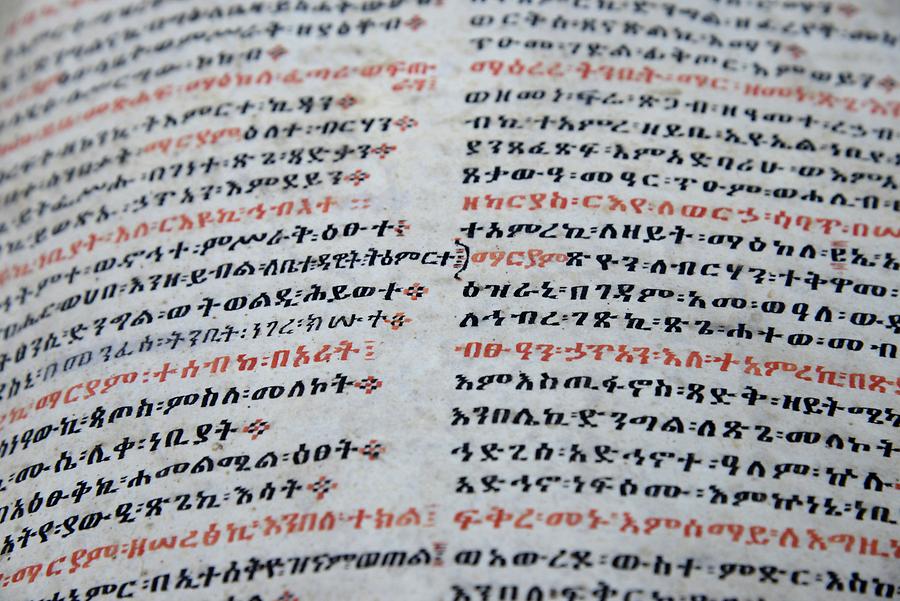Bibel#

Bibel, January 2013, © Gerhard Huber, under CC BY-NC 4.0 +Edu
The historically documented history, on the other hand, knows that about 3,000 years ago Egyptian Cushites from the north and Sabaeans from the west migrated into Ethiopia. They brought along the legend of the Queen of Sheba, which in the course of time intermingled with Ethiopian legends.
Axum also has many cultural influences from South Arabia. A modified form of the its script was used, and the Sabaean lunar deity Almaqah was worshipped. As so often in history, also here trade formed the basis for prosperity: With the consolidation of the Roman Empire an insatiable need for exotic luxury goods developed there. The Aksumite port of Adulis on the Red Sea was the most important transshipment point for that, for spices and fabrics from India and China as well as for gold, ivory, incense and slaves from Africa. As a result of the lucrative long-distance trade, Axum began to mint its own coins in the 3rd century. Thus it was the only realm in Africa apart from Egypt to mint coins in ancient times. In its golden age, Axum stretched from the eastern Sudan to the southern Arabia.
Die historisch verbriefte Geschichte dagegen weiß, dass vor rund 3000 Jahren ägyptische Kuschiten aus dem Norden und Sabäer aus dem Westen in Äthiopien einwanderten. Sie brachten die Legende der Königin von Saba mit, die sich im Laufe der Zeit mit äthiopischen Erzählungen vermischte.
Auch kulturell weist Axum viele Einflüsse aus Südarabien auf. Man verwendete eine abgewandelte Form der dortigen Schrift und verehrte den sabäischen Mondgott Almaqah. Wie so oft in der Geschichte bildete auch hier der Handel die Basis für den Wohlstand: Mit der Konsolidierung des römischen Reiches entwickelte sich dort ein unstillbarer Bedarf nach exotischen Luxusgütern. Der axumitische Hafen von Adulis am Roten Meer war dafür die wichtigste Umschlagplatz – sowohl für Gewürze und Stoffe aus Indien und China, als auch für Gold, Elfenbein, Weihrauch und Sklaven aus Afrika. Ausgelöst durch den lukrativen Fernhandel begann Axum im 3. Jh. mit dem Prägen eigener Münzen. Es war damit das einzige Reich Afrikas außerhalb Ägyptens, das in der Antike Münzen prägte. Zur Blütezeit erstreckte sich Axum vom östlichen Sudan bis ins südliche Arabien.